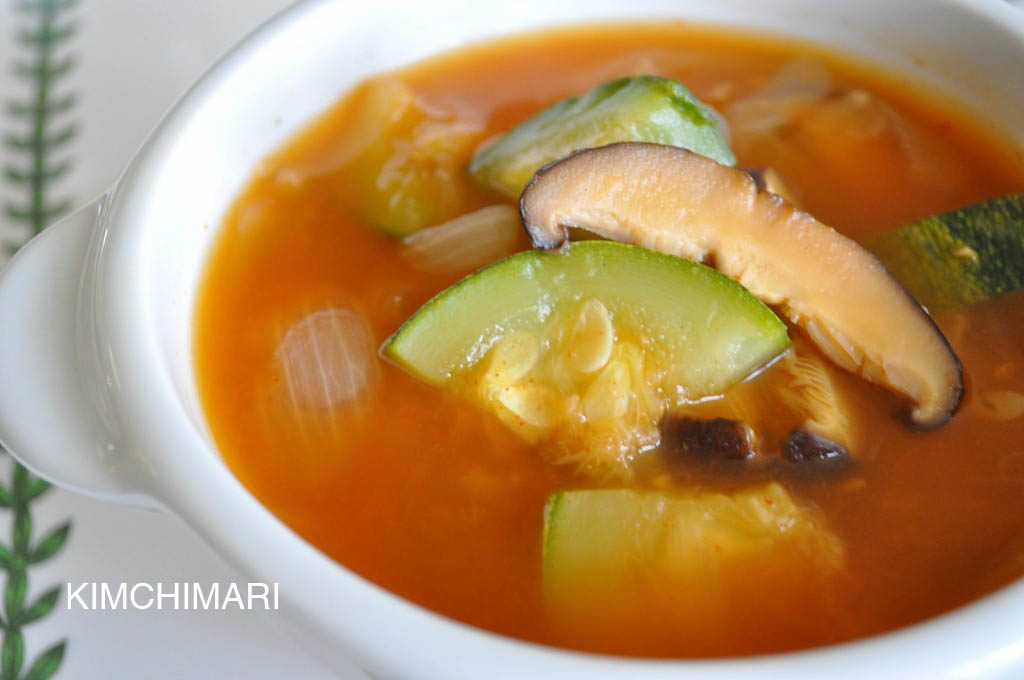
Gochujang Hobak Jjigae is the go-to stew that I mentioned in my recent Yache Twigim post. Because this recipe does not contain any meat(the broth is dried anchovy stock so it’s not fully vegetarian but close), it is really light (there’s no fat in this) but still very flavorful. It also goes well with other Korean meat dishes, pajeon and grilled fish. In fact, it goes well with just about anything that’s not spicy. I guess you are probably wondering why not spicy?
This is actually one of my pet peeves…I believe people should not serve too many spicy dishes together. It just overloads your palate and after a while they all taste the same – SPICY!!! Instead of making five different dishes that are all red, spicy and salty, why not use the same energy to create a harmonious blend of different flavored dishes? If a dish is a heavy meat dish, the other dish should be something light, tangy and even spicy(like salads or other lighter vegetable dishes).
If a dish is very spicy and heavily seasoned, the other should be something that is rich, creamy or nutty to soothe the palate. If you do this, there’s no need to cook many different dishes for parties but just two or three that go well together. And people will love you for it.
This recipe is my take on the very classic Korean gochujang hobak jjigae that traditionally uses beef or pork. The jjigae tastes great with either meat but I started making it without any meat because it’s healthier and also because my husband is allergic to pork ( sensitive is probably more accurate since he can tolerate a few pieces but if he eats a lot, his eyes become red, nose gets all stuffy, sometimes his skin also gets red blotches and just does not feel good afterwards) .
This meatless version goes really well with heavier meat dishes like bulgogi or kalbi. But if you are having this gochujang hobak jjigae as a main dish, definitely try it with the meat. Personally, I grew up loving the pork version and most restaurants will serve it with the pork. Pork really adds a nice hearty flavor to the dish. So here, I added mushrooms instead and I really love this version.
This recipe uses a lot of mushrooms which makes it very healthy. The benefits of shitake mushrooms are quite many- it lowers blood pressure, reduces cholesterol, strengthens your immune system, improves liver function and is also known to be an anti-cancer/tumor food. In Korean and other eastern medicine, these benefits have been long known and shitake is probably one of the most common mushrooms used in all of Chinese, Japanese and Korean cuisine.
Well, enough talking…let’s start cooking!
Gochujang Hobak Jjigae (Spicy Gochujang Zucchini Stew)
Ingredients
- 1 C dried big anchovies for stock (국멸치 Guk Myeolchi)
- 6 C water (or water used to rinse the rice)
- 5 -6 dried Shitake mushrooms
- 1 large yellow onion
- 1 large or 2 small Korean or Italian zucchini
- 7 oz sliced firm tofu(optional)
- 2 green onions
- 1 C mushroom water (that comes from soaking the dried shitake)
- 1 1/2 tsp salt
- 2 tsp chopped garlic
- 2 T gochujang
- 2 tsp chosun or gook kanjang(조선 간장)
- 1/8 tsp garlic powder (optional)
1. Soak the dried shitake mushrooms in cold water for 30 min or more until the stems are fully soft. If you don’t have the 3o min, you can speed things up by soaking the shitake in warm or hot water while making sure they are all fully immersed. Soaking in hot water can take away the taste of the mushrooms but since we are using the mushroom water also, it’s OK. You can do this by pressing the mushrooms down with a heavy bowl.
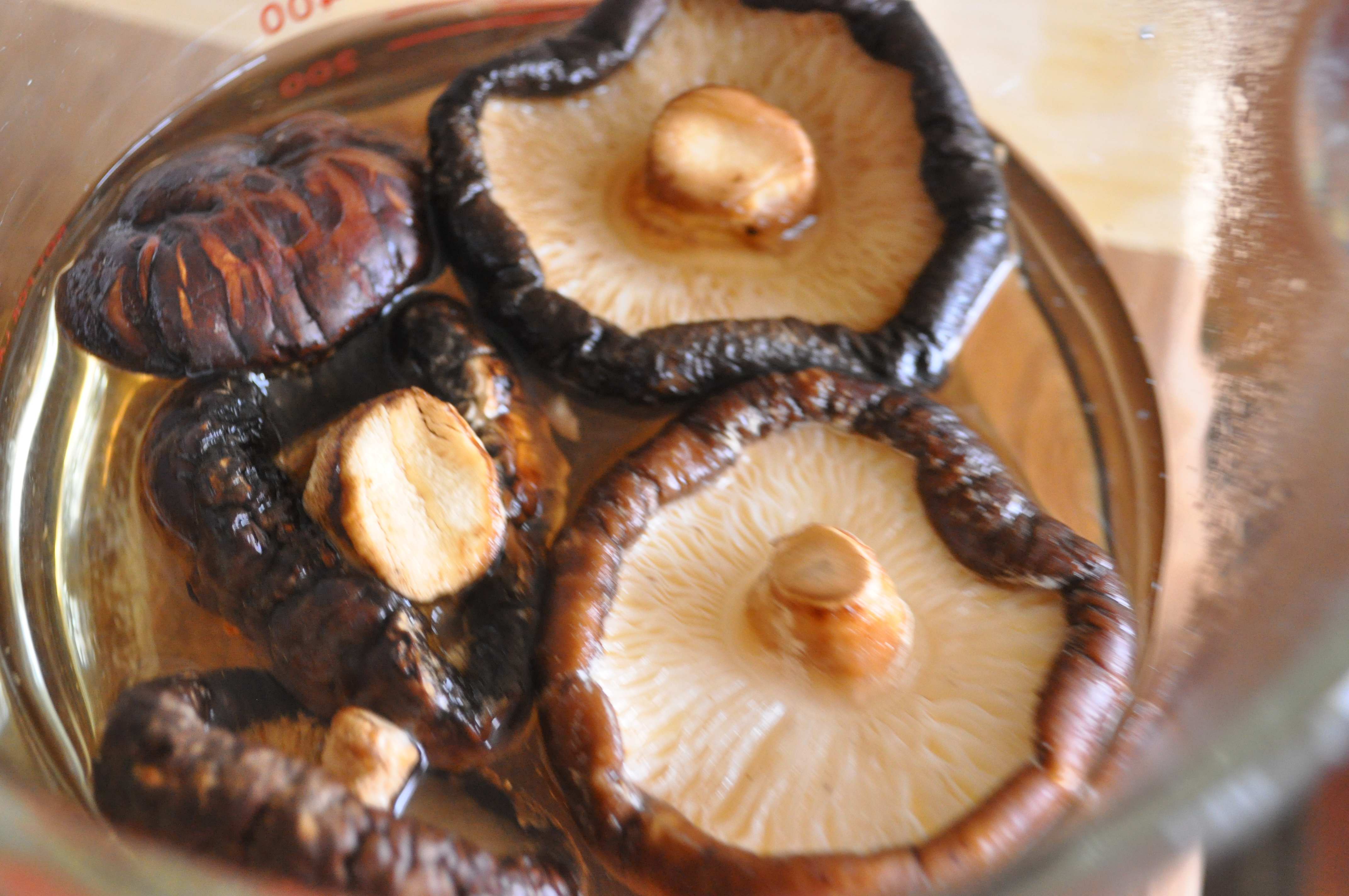
shitake mushrooms soaking in water
2. Make the dried anchovy stock by adding about 1 cup of dried anchovies into a pot and add 6 C of cold water (6 cups). DO NOT cover the pot when making the stock. Covering the pot will trap the fishy smell and you will end up with the fishy smell infused into your stock. Heat and keep it simmering for 20 minutes. You can also make the anchovy stock up to a day in advance – see How to make Anchovy Broth page.
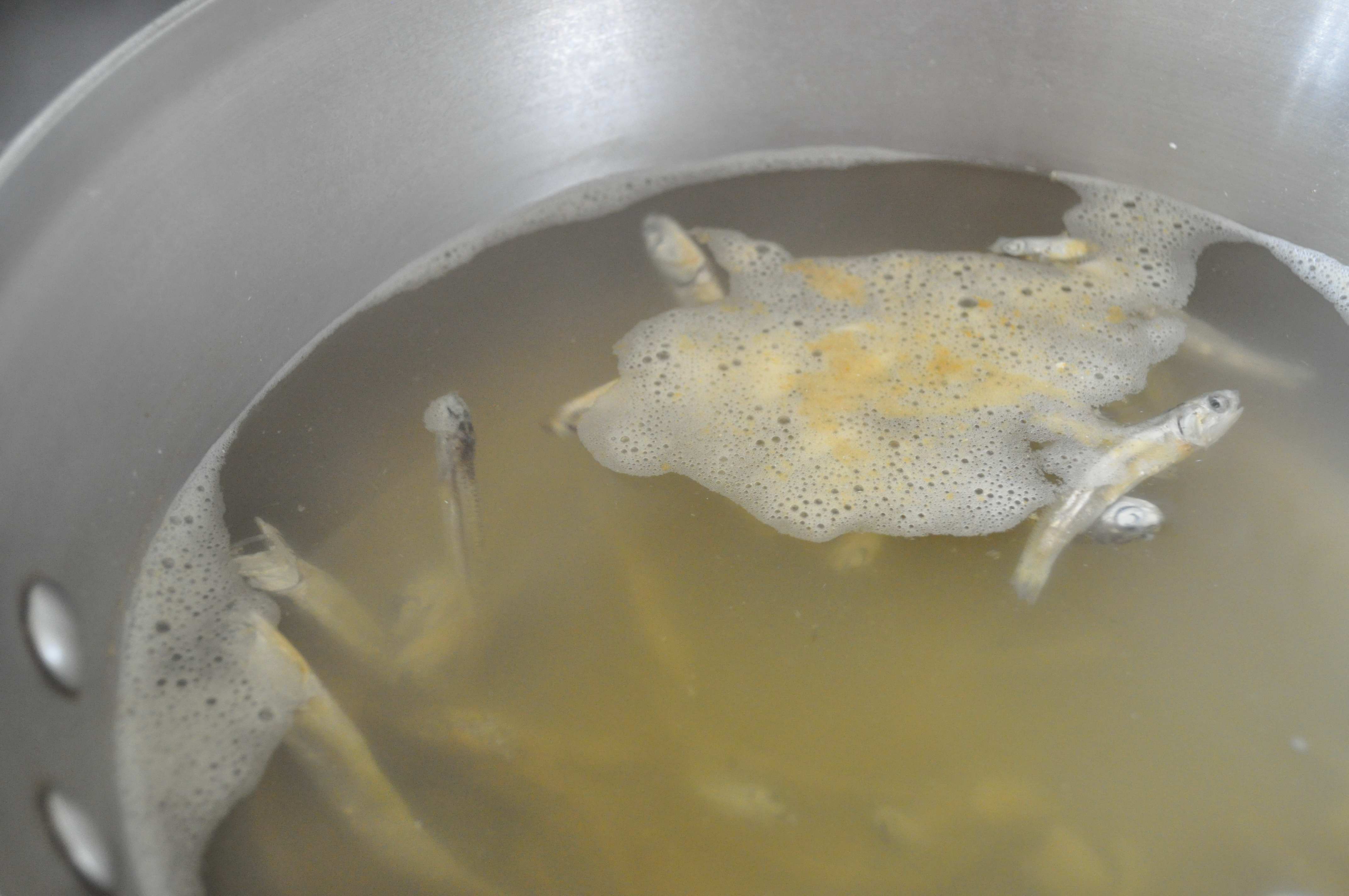
If you just drop the anchovies in the water like I did here, you will either have to strain or fish out the anchovies from the liquid when you are done. I forgot to use it here but there are paper bags that you can buy from an oriental market. You can put the anchovies in this bag, make the stock and then just take out the bag and throw it away when done.
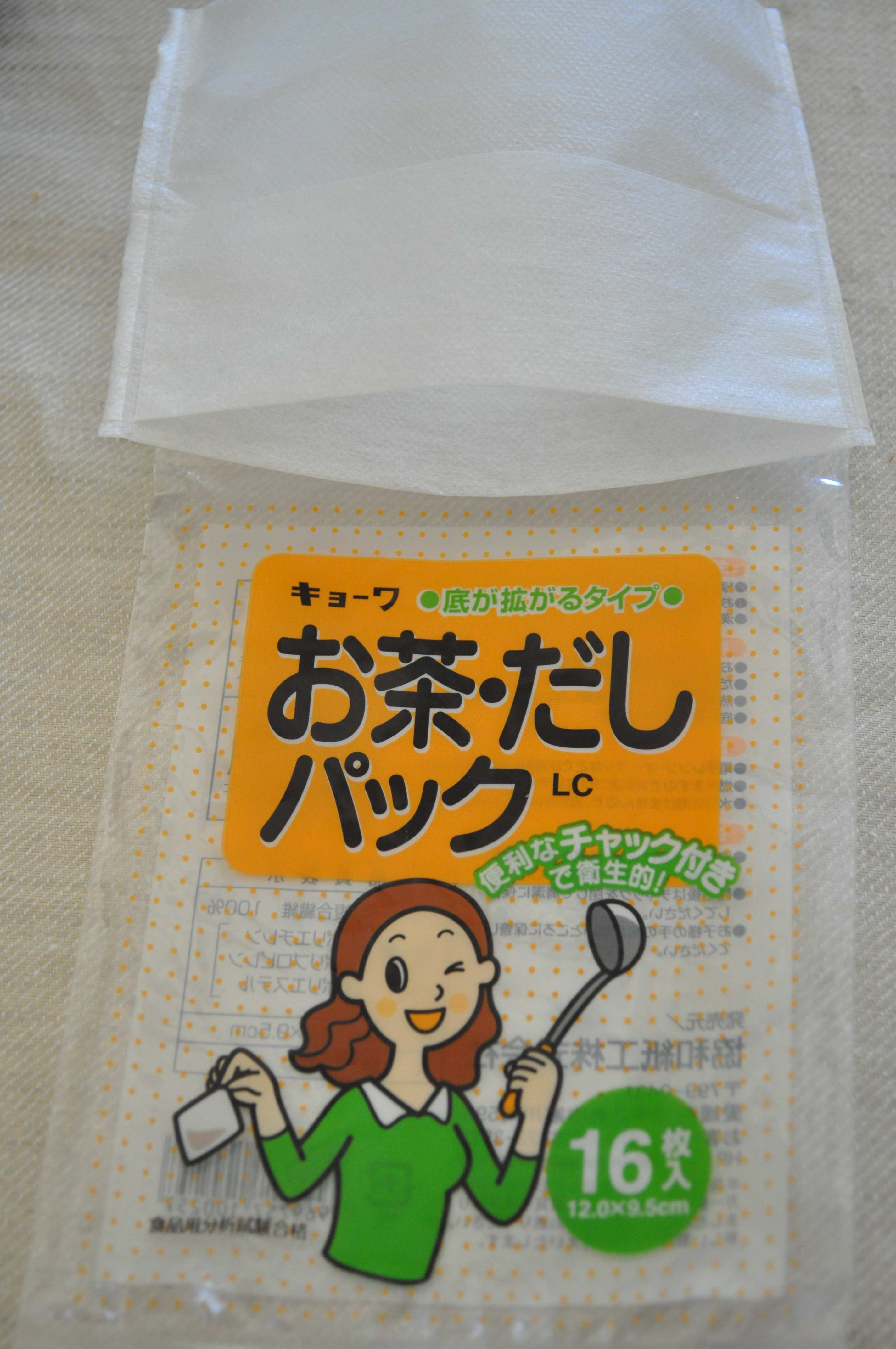
It kind of works like a plastic sandwich bag in terms of how you close up the bag. You can also buy a reusable stainless mesh container from your Korean market (멸치다시통 Myulchi dashitong) that looks like a giant mesh tea infuser ball. It’s great that it’s reusable but I got tired of the container getting accidentally opened up while in the pot (which totally defeats the purpose!!) so I stopped using it some time ago. The bag works pretty well – if I remember to use it that is…
3. Remove and discard anchovies after 20 min.
4. While the anchovy stock is simmering, cut your vegetables – zucchini, onions, mushrooms. Zucchini cooks quickly and gets really soft so cut them in larger chunks. When the mushrooms are fully re-hydrated, take them out of the water, squeeze slightly, cut off the stem and slice off the cap part. Simply slice your onions.
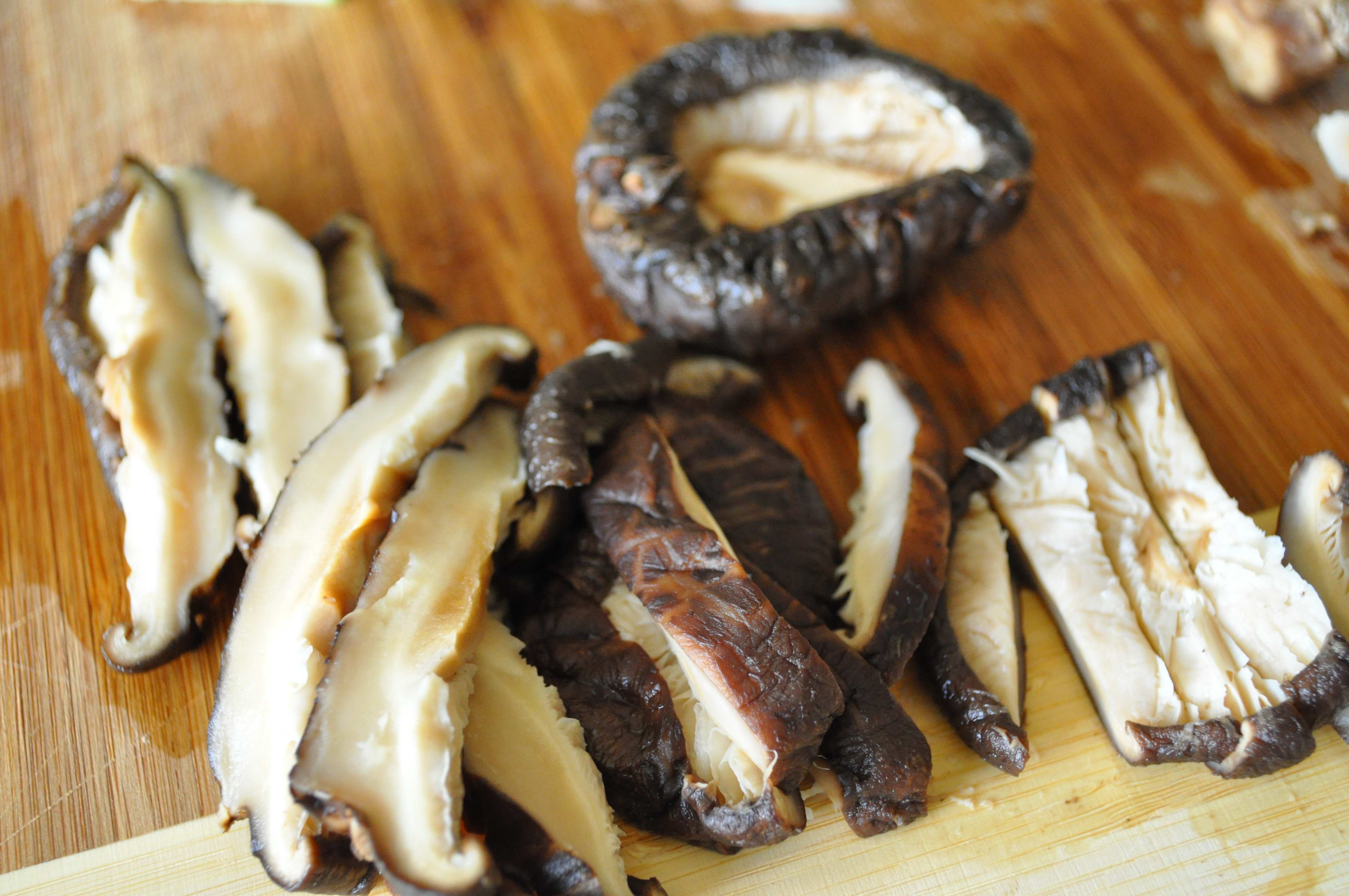
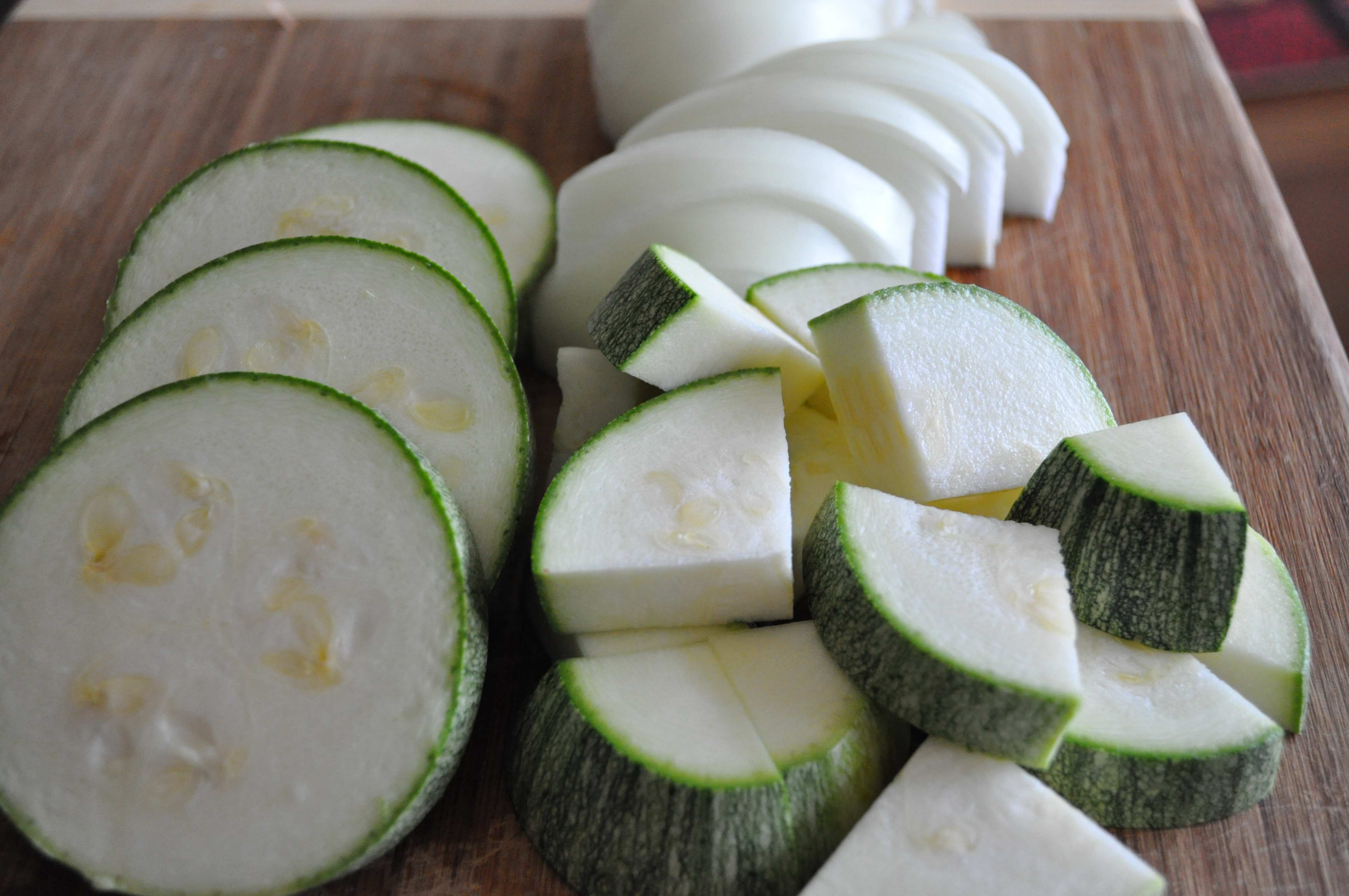
4. Stir in 2 T of gochujang to the simmering anchovy stock, making sure it is well mixed in. Add 1 cup of the mushroom water that comes from soaking the shitake mushrooms. This is something I learned recently from my mother-in-law and it really adds a lot of flavor to the jjigae without using any MSG (which I NEVER use in my cooking). MSG is another thing my husband is allergic to and so I had to learn a long time ago not to rely on MSG in any of my cooking.
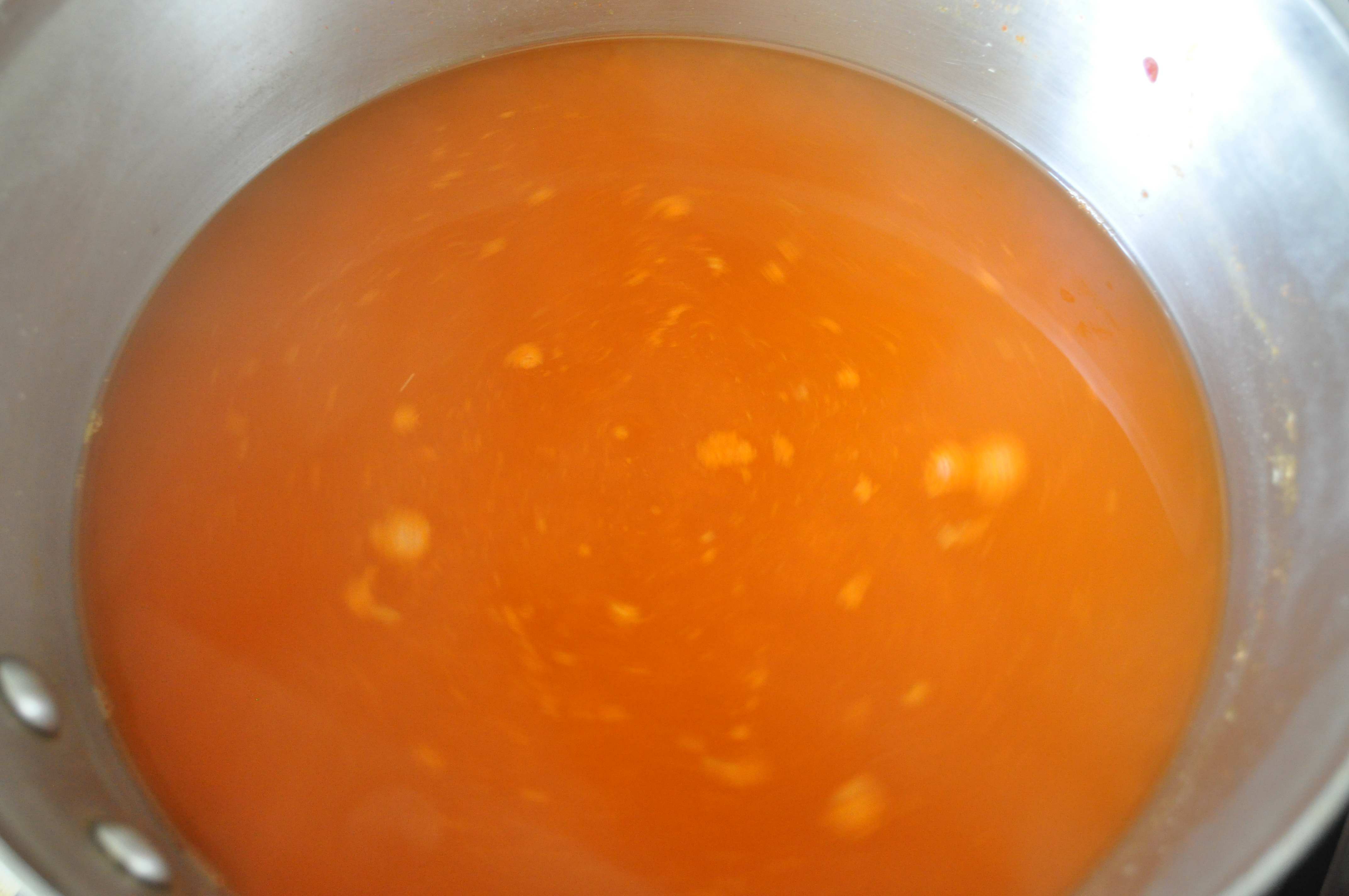
5. Add onions and mushrroms to gochujang broth. Raise the heat to medium and cook for 5 minutes.
6. Add zucchini, tofu, chopped garlic, garlic powder, gook kanjang and just 1 tsp of salt. Cover and let it cook for another 10 minutes or so. Left is a picture of my chopped garlic from the freezer. These two squares equal about 2 tsp of chopped garlic. And the bottom picture is my jjigae boiling with all the added vegetables.
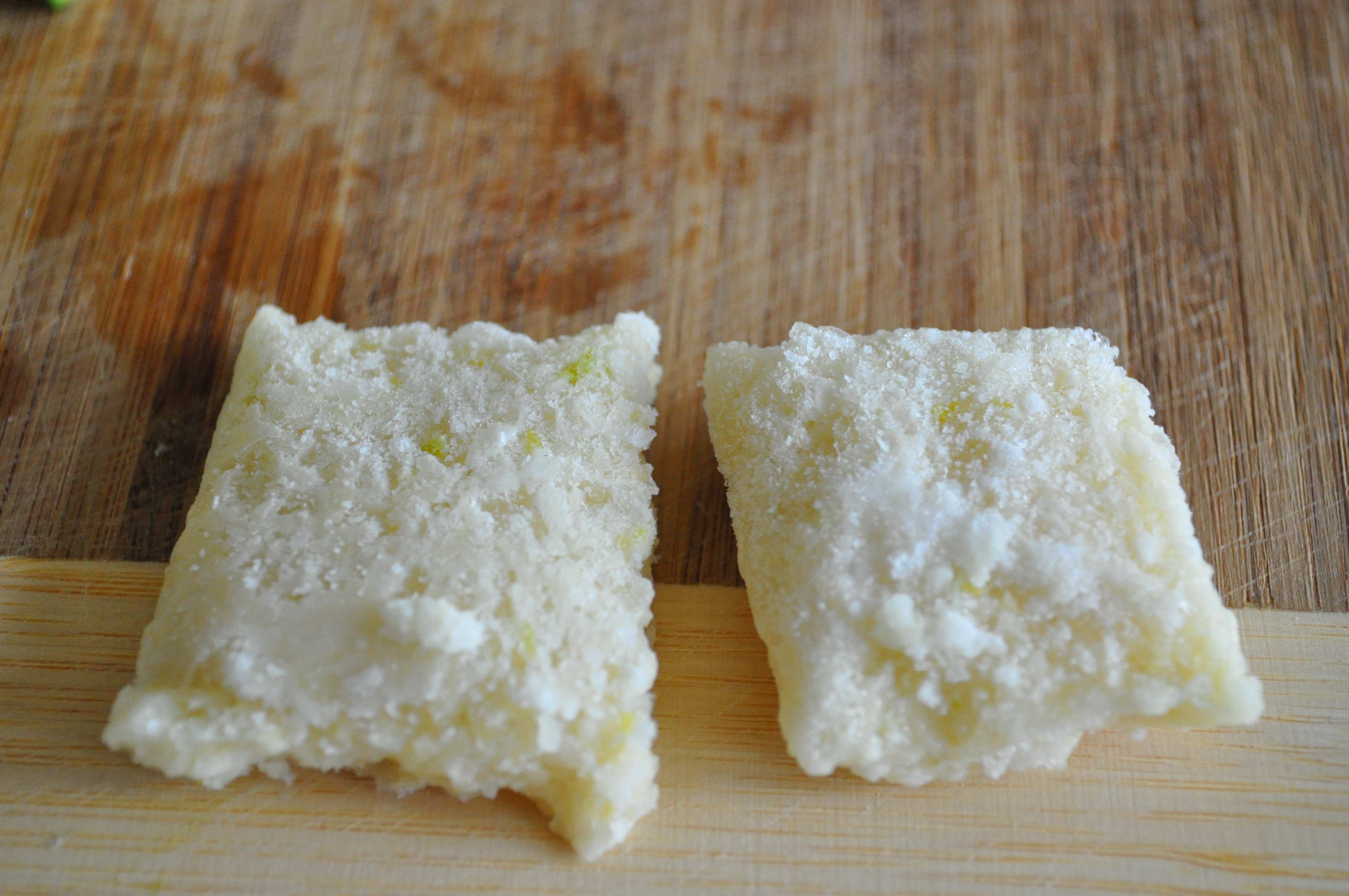
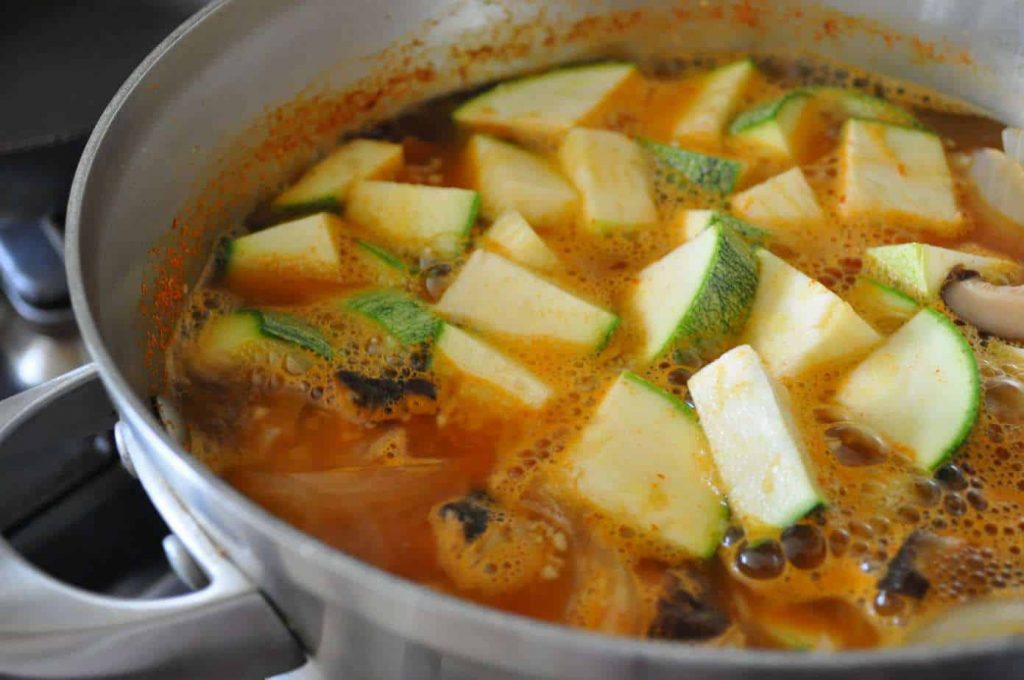
After 10 minutes, taste the jjigae. The full flavor may not yet be there but try to taste the saltiness. Depending on the kind of salt you use, you may need to add more. The salt I use is a good quality sea salt so it is not as salty as the more common table salt. And that’s the reason why I suggested putting in only 1 tsp of the 1 1/2 tsp of salt earlier. If you need to, add the remaining 1/2 tsp of salt.
6. Lower the heat to low and let it simmer for another 5 to 10 minutes. Add green onions a couple of minutes before you turn the heat off – or you can just add it in at the end. It’s now ready to eat. The funny thing about jjigae is that it actually tastes better the next day. So keep any remaining stuff in the pot or fridge and reheat it again and again. Just add a little bit of water each time so it doesn’t get too concentrated.
Gochujang Hobak Jjigae (Spicy Zucchini Stew)
Ingredients
- 1 cup dried big anchovies for stock (Guk Myeolchi)
- 6 cups water (or water used to rinse the rice)
- 5 -6 dried shiitake mushrooms
- 1 large yellow onion
- 1 large Korean or Italian zucchini (or 2 small)
- 7 oz sliced firm tofu (optional)
- 2 green onions
- 1 cups mushroom water (that comes from soaking the dried shiitake)
- 1 1/2 tsp salt
- 2 tsp chopped garlic
- 2 Tbsp gochujang
- 2 tsp chosun or gook kanjang
- 1/8 tsp garlic powder (optional)
Instructions
- Soak the dried shiitake mushrooms in cold water for 30 min or more until the stems are fully soft. If you don’t have the 30 min, you can speed things up by soaking the shitake in warm or hot water while making sure they are all fully immersed. DO NOT DISCARD MUSHROOM WATER.
- Make the dried anchovy stock by adding about 1 cup of dried anchovies into a pot and add 6 cups of cold water. DO NOT cover the pot when making the stock. Covering the pot will trap the fishy smell and you will end up with the fishy smell infused into your stock. Heat and keep it simmering for 20 minutes.
- Remove and discard anchovies after 20min.
- While the anchovy stock is simmering, cut your vegetables. Zucchini cooks quickly and gets really soft so cut them in larger chunks. When the mushrooms are fully re-hydrated, take them out of the water, squeeze slightly, cut off the stem, and slice off the cap part. Simply slice your onions.
- Stir in 2 Tbs of gochujang to the simmering anchovy stock, making sure it is well mixed in. Add 1 cup of the mushroom water that comes from soaking the shiitake mushrooms.
- Turn up the heat to medium and add the cut onions and mushrooms. Cover and let it cook for 5 minutes.
- To the pot, add zucchini, tofu, chopped garlic, garlic powder, gook kanjang and just 1 tsp of salt. Raise the heat to medium high, cover and let it cook for another 10 minutes or so.
- After 10 minutes, taste the jjigae. The full flavor may not yet be there but try to taste the saltiness. Depending on the kind of salt you use, you may need to add more.
- Lower the heat to low and let it simmer for another 5 to 10 minutes. Add green onions a couple minutes before you turn off heat or use as garnish at the end. It’s now ready to eat.
Tips & Notes:
- If you just drop the anchovies in the water to make the broth, you will either have to strain or fish out the anchovies from the liquid when you are done. There are paper tea bags that you can buy from an oriental market. You can put the anchovies in this bag, make the stock and then just take out the bag and throw it away when done. You can also buy a reusable stainless mesh container from your Korean market (Myulchi dashitong) that looks like a giant mesh tea infuser ball.
- It actually tastes better the next day. So keep any remaining stuff in the pot or fridge and reheat it again and again. Just add a little bit of water each time so it doesn’t get too concentrated.
Nutrition Information:
Tips
Using good quality dried anchovies and shitake mushrooms really makes a big difference in the final outcome. How do you know what are good quality anchovies or mushrooms? I plan to write about this in My Tips section soon but in the mean time, another life tip from my MIL(mother-in-law), when in doubt, buy ones that are more expensive. This doesn’t always work but for most cases, the old adage of “you get what you paid for” really is true..
Variations
To add meat to your jjigae, first saute the meat in a pot with a little bit of garlic, oil and some of the gochujang. When the meat is cooked, add water or anchovy stock to it. The rest is the same.
- Beef – any stew meat will do or any other better cut. Cut into small bite size pieces. About 1 C.
- Pork – you can use shoulder meat or the more fatty belly meat. All depends on how much fat you want. About 1 C.
- Seafood – you can add clams or squid to the jjigae and it becomes a wonderful seafood stew.
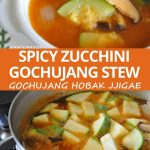
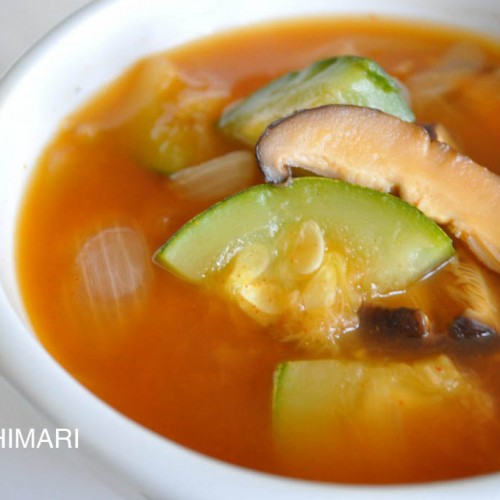
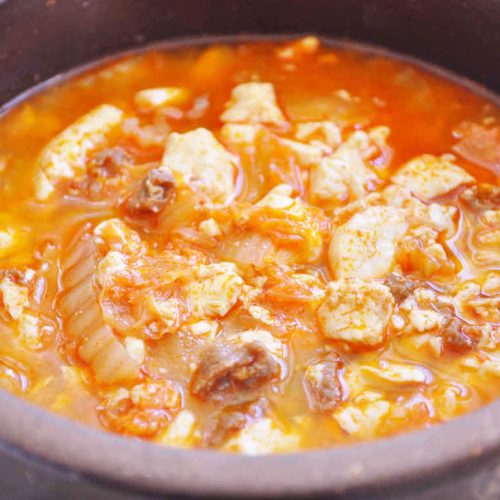
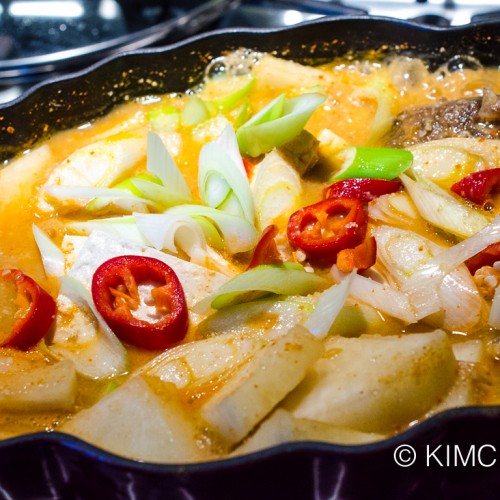
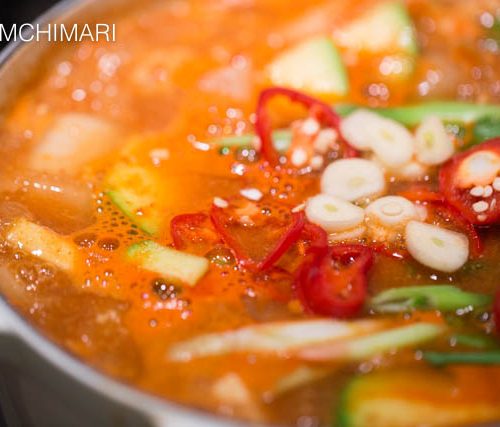
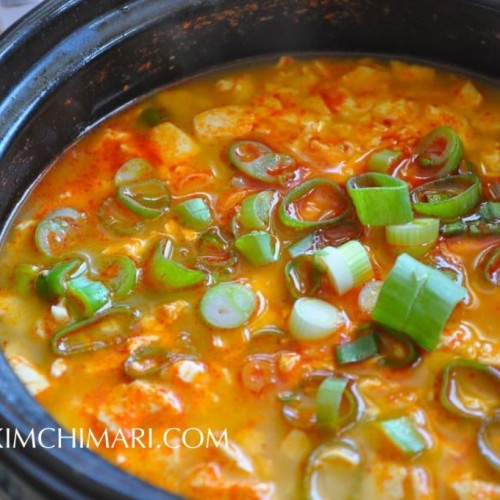
















Did or do you gut the anchovies before adding to the water to make the stock?
I only gut the anchovies when they are bigger – the ones that are as big as your index finger. If the anchovies are smaller than those, you can get away not gutting them. Doesn’t hurt to do it, I just try to simplify things if it’s not necessary. Thanks for asking!